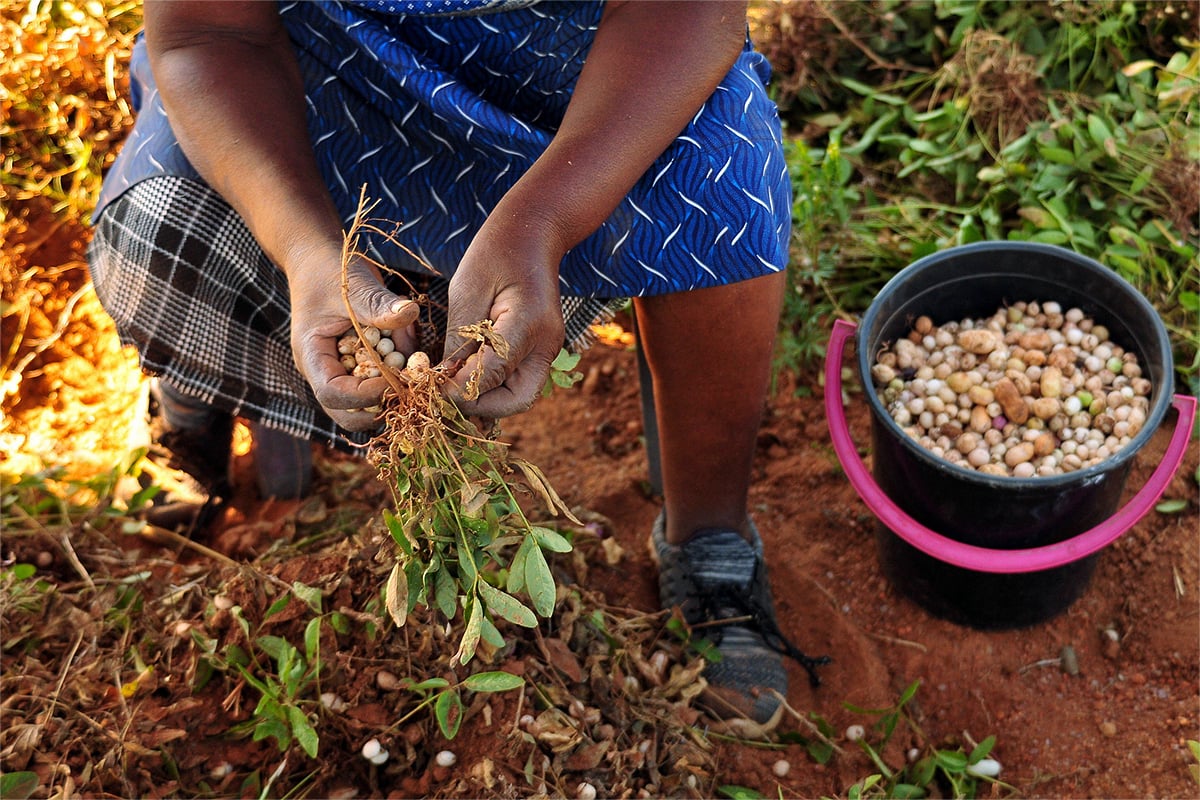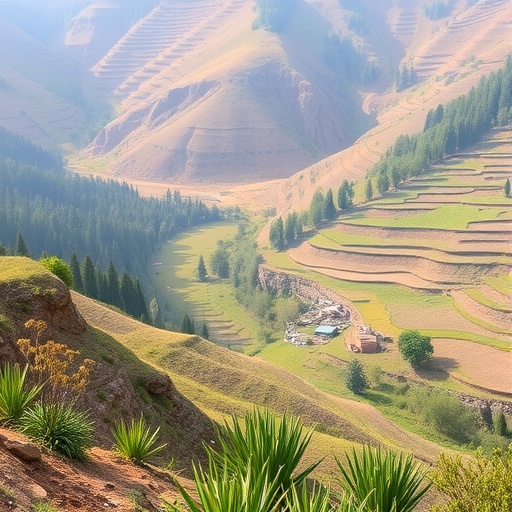How Zimbabwean smallholders are adapting to drought – Dialogue Earth

Report on the Pfumvudza Farming Method and its Contribution to Sustainable Development Goals in Zimbabwe
Executive Summary
This report examines the implementation and impact of the Pfumvudza farming method, a conservation agriculture technique, in Zimbabwe. Faced with frequent droughts and climate unpredictability, smallholder farmers have adopted this method to improve crop yields, particularly for maize. The program, a collaboration between non-profit organizations and the Zimbabwean government, demonstrates significant progress towards several United Nations Sustainable Development Goals (SDGs), including SDG 1 (No Poverty), SDG 2 (Zero Hunger), SDG 13 (Climate Action), and SDG 15 (Life on Land).
Addressing Poverty and Hunger through Agricultural Innovation (SDG 1 & SDG 2)
The Pfumvudza method directly confronts the challenges of food insecurity and poverty prevalent among Zimbabwe’s smallholder farmers, who have historically suffered from poor yields due to adverse weather conditions. By improving agricultural productivity, the initiative makes substantial contributions to SDG 1 (No Poverty) and SDG 2 (Zero Hunger).
Impact on Livelihoods and Food Security
- Enhanced Food Availability: Farmers like Landlots Kuutsi from Tikwiri village, who previously struggled to feed their families, now report significantly improved harvests. This ensures year-round food availability for households, directly advancing the goal of Zero Hunger.
- Poverty Alleviation: Increased yields translate into surplus produce, which can be sold. This provides a stable income, enabling families to afford essentials such as school fees and invest in their farms, thereby contributing to the eradication of poverty.
- Case Example: Balbina Toperesu of Tsanzaguru township reported that since adopting the method in 2022, she is assured of harvesting over ten 50kg bags of maize, securing food and income for her family.
Climate Adaptation and Sustainable Land Management (SDG 13 & SDG 15)
Pfumvudza is a direct response to the effects of climate change, serving as a key adaptation strategy. Its principles are rooted in conservation agriculture, promoting the sustainable use of terrestrial ecosystems and enhancing resilience against climate-related hazards.
Core Principles and Environmental Benefits
The method’s design is critical for farming in drought-prone regions and aligns with SDG 13 (Climate Action) and SDG 15 (Life on Land).
- Zero-Tillage: Farmers dig precise planting holes rather than ploughing entire fields. This minimizes soil disturbance, reduces erosion, and improves soil structure.
- Mulching: The use of grass and other organic cover for mulching is a central practice. This technique is crucial for retaining soil moisture, which is vital during erratic and delayed rainy seasons.
- Organic Matter Application: Manure or compost is added to planting holes, enriching the soil with nutrients and improving its long-term health and fertility.
- Early Preparation: Land preparation begins months before the traditional rainy season, ensuring farmers can plant immediately upon the first rains, maximizing the shortened growing window caused by climate change.
Implementation through Strategic Partnerships (SDG 17)
The widespread adoption of Pfumvudza was made possible through effective partnerships between non-governmental and governmental bodies, a core tenet of SDG 17 (Partnerships for the Goals).
Collaborative Rollout and Support
- Initial Introduction: The Zimbabwean non-profit, Foundation for Farming, worked with the Department of Agricultural Technical and Extension Services (Agritex) to introduce the concept.
- Government Adoption: In 2020, the Zimbabwean government officially adopted the program, aiming to train one million smallholder farmers. This initiative was expanded to reach over 3.5 million farmers by 2024.
- State Support: The government, through Agritex, provides farmers with essential inputs like fertilizer and seeds for maize, groundnuts, and sorghum, in addition to free training and ongoing technical guidance.
Outcomes, Challenges, and Future Outlook
The program has achieved remarkable success, with a 2023 government study indicating that 84% of rural households had adopted the method across 744,588 hectares. Despite initial resistance from some farmers due to the labor-intensive nature of land preparation and the cost of fencing to protect plots from livestock, the visible success of early adopters has encouraged broader acceptance.
Conclusion
The Pfumvudza initiative in Zimbabwe serves as a powerful model for achieving integrated sustainable development. By enhancing food security, alleviating poverty, promoting climate resilience, and restoring land health, the program demonstrates how targeted agricultural interventions can drive progress across multiple SDGs. The commitment of farmers to continue the practice, coupled with plans for further investments like drilling boreholes for irrigation, signals a sustainable and resilient future for Zimbabwe’s agricultural sector.
1. Which SDGs are addressed or connected to the issues highlighted in the article?
SDG 2: Zero Hunger
This is the most prominent SDG in the article. The entire narrative revolves around improving food security for smallholder farmers in Zimbabwe who face poor maize yields. The introduction of the Pfumvudza farming method is a direct response to combat hunger and ensure families have enough food, as stated by farmers like Landlots Kuutsi and Balbina Toperesu who can now “feed my family to the next farming season.”
SDG 13: Climate Action
The article explicitly links the farming challenges to climate change. It mentions that the weather in Makoni district is “less predictable than ever” and that Zimbabwe has experienced “frequent droughts.” The Pfumvudza method is presented as an adaptation strategy (“The need to adapt”) to these climate-related hazards, designed to retain soil moisture in drought-prone regions.
SDG 1: No Poverty
The article connects agricultural struggles to poverty. Landlots Kuutsi is introduced as a farmer who would “struggle to put enough food on the table for his family, let alone afford school fees for his four children.” By improving yields, the Pfumvudza method helps improve the livelihoods of these farmers, addressing the economic dimension of poverty.
SDG 15: Life on Land
The Pfumvudza method is described as a “conservation agriculture” technique that involves zero-tillage, mulching, and adding manure. These practices are aimed at improving “soil structure and keeps in moisture,” which directly contributes to restoring degraded land and promoting sustainable use of terrestrial ecosystems.
SDG 8: Decent Work and Economic Growth
The article notes that “agriculture is central to Zimbabwe’s economy and was the third-biggest contributor to value addition in 2023.” By boosting the productivity of smallholder farmers, who form a significant part of the agricultural sector, the initiative contributes to the country’s overall economic growth.
2. What specific targets under those SDGs can be identified based on the article’s content?
SDG 2: Zero Hunger
- Target 2.1: “By 2030, end hunger and ensure access by all people… to safe, nutritious and sufficient food all year round.” The article highlights how farmers who adopted Pfumvudza are now “assured of a better harvest” and can feed their families “to the next farming season,” directly addressing year-round food access.
- Target 2.3: “By 2030, double the agricultural productivity and incomes of small-scale food producers…” The article focuses on “smallholder farmers” and how the new method has “improved his yields considerably.” The government’s support through training and providing inputs like seed and fertilizer also aligns with this target.
- Target 2.4: “By 2030, ensure sustainable food production systems and implement resilient agricultural practices that increase productivity… strengthen capacity for adaptation to climate change, extreme weather, drought…” Pfumvudza is explicitly described as a resilient practice (“conservation agriculture”) designed to adapt to drought by retaining soil moisture and improving soil health.
SDG 13: Climate Action
- Target 13.1: “Strengthen resilience and adaptive capacity to climate-related hazards and natural disasters in all countries.” The article frames the entire initiative as a response to “frequent droughts” caused by climate change, with Pfumvudza being the tool to build farmers’ resilience.
SDG 15: Life on Land
- Target 15.3: “By 2030, combat desertification, restore degraded land and soil…” The Pfumvudza method’s core principles—zero-tillage, mulching, and adding organic matter—are direct actions to improve soil structure and health, thereby restoring land quality in a drought-prone region.
3. Are there any indicators mentioned or implied in the article that can be used to measure progress towards the identified targets?
Yes, the article provides several quantitative and qualitative indicators:
- Agricultural Yield: A direct measure of productivity. The article mentions Balbina Toperesu is “nowadays assured of more than ten 50kg bags of maize grain this year,” which serves as a specific indicator of improved yield.
- Number of Farmers Adopting Sustainable Practices: The article provides concrete numbers, stating the government trained “one million smallholder farmers” in 2020 and the program was “extended to more than 3.5 million in 2024.” This measures the uptake of the resilient farming method.
- Percentage of Households Adopting the Method: A government study is cited, suggesting that “84% of rural households had adopted the method,” indicating the scale and reach of the intervention.
- Total Land Area Under Sustainable Management: The article quantifies the land area covered, stating there are “12 million plots covering 744,588 hectares across the nation.” This is a key indicator for Target 15.3.
- Household Food Security: Qualitative statements like being able to “feed my family to the next farming season” and no longer struggling “to put enough food on the table” serve as indicators of progress towards ending hunger (Target 2.1).
4. Create a table with three columns titled ‘SDGs, Targets and Indicators” to present the findings from analyzing the article.
| SDGs | Targets | Indicators |
|---|---|---|
| SDG 2: Zero Hunger |
|
|
| SDG 13: Climate Action |
|
|
| SDG 1: No Poverty |
|
|
| SDG 15: Life on Land |
|
|
| SDG 8: Decent Work and Economic Growth |
|
|
Source: dialogue.earth

What is Your Reaction?
 Like
0
Like
0
 Dislike
0
Dislike
0
 Love
0
Love
0
 Funny
0
Funny
0
 Angry
0
Angry
0
 Sad
0
Sad
0
 Wow
0
Wow
0









































































